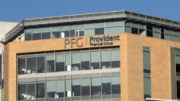Bradford-based Yorkshire Building Society said it increased its core operating profit by 35% to £84.2 million in the first half of 2017 but its profit before tax fell to £92.3 million from £99.9 million in the same period last year.
Yorkshire said its liquidity was above regulatory requirements at £5 billion, up from £4.7 billion at December 31, 2016.
Mortgage balances were little changed at £34 billion and savings balances edged lower to £28.9 billion from £29.1 billion at December 31, 2016.
Yorkshire said it delivered savings rates which “beat the market” — offering an average rate of 1.03% versus a market average of 0.75%.
Mike Regnier, Chief Executive of Yorkshire Building Society, said: “In the context of a challenging and highly competitive market, I’m pleased to report Yorkshire Building Society has continued to deliver a healthy and robust financial performance.
“In line with our plans we’ve taken a disciplined and measured approach, focusing on our core businesses of mortgages and savings.
“Our priority is to deliver long-term value for money and excellent customer service.
“We have strengthened our financial security through improved capital, leverage and liquidity positions and delivered a solid level of profit for a business of our size, which will be retained or reinvested in services …
“We’re focusing on the financial services which matter the most to our members – buying a home of their own and saving for their futures.
“Our market-leading mortgages have helped more than 3,100 people to become homeowners for the very first time, and enabled thousands more to buy the home of their choice or remortgage an existing property.
“We’re here to deliver value for our members and we’re delighted that we have continued to beat the market by offering savings rates which pay 0.28% more than the average, even in the context of last year’s Bank Rate cut.
“The brand and branch network changes announced in January have begun to be implemented through the first half of the year.
“As a result, we expect to see increased long-term value and cost reductions realised in the medium to long term.”



